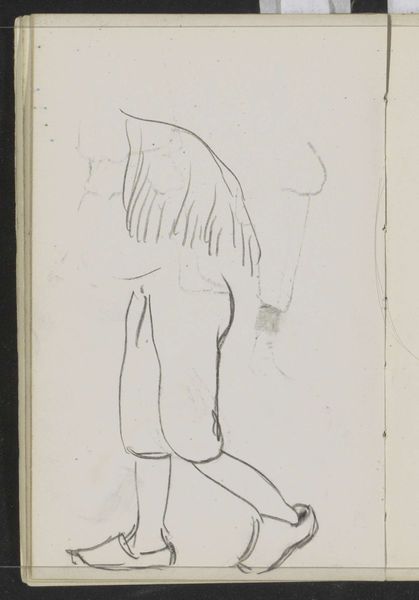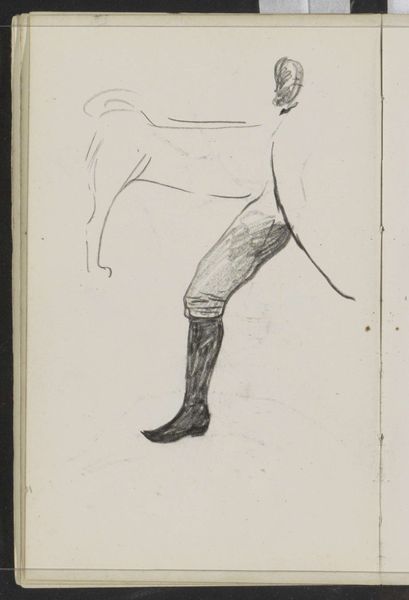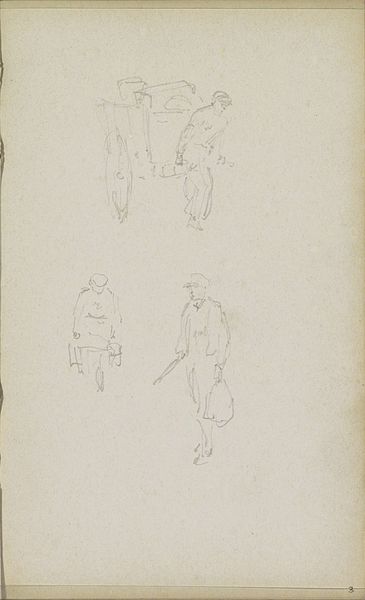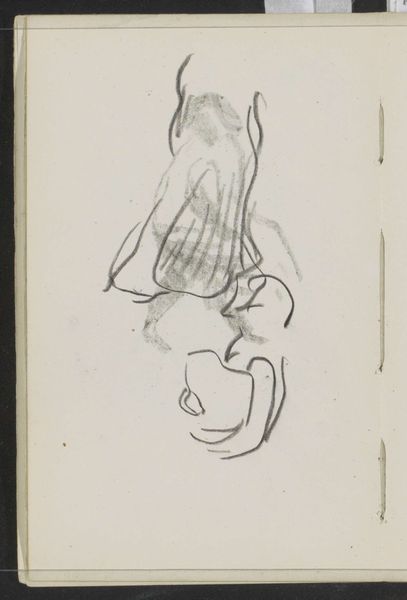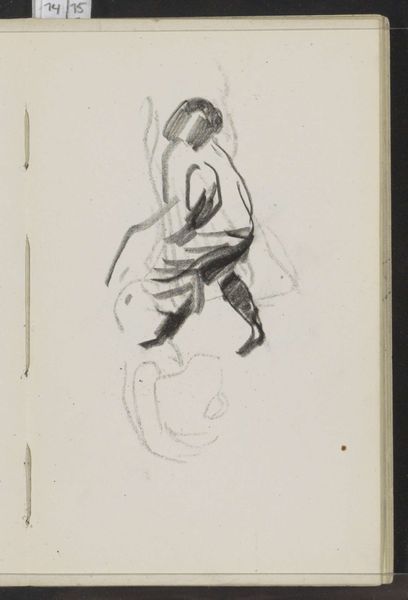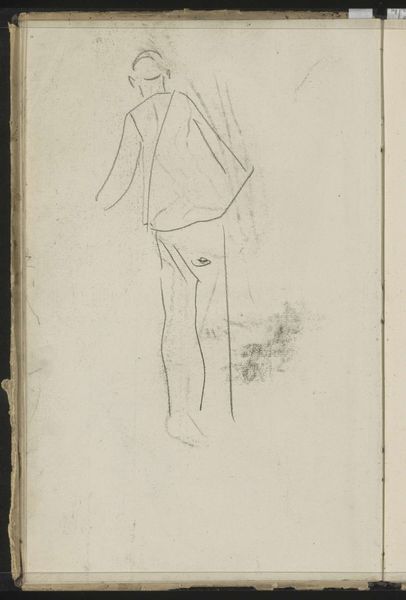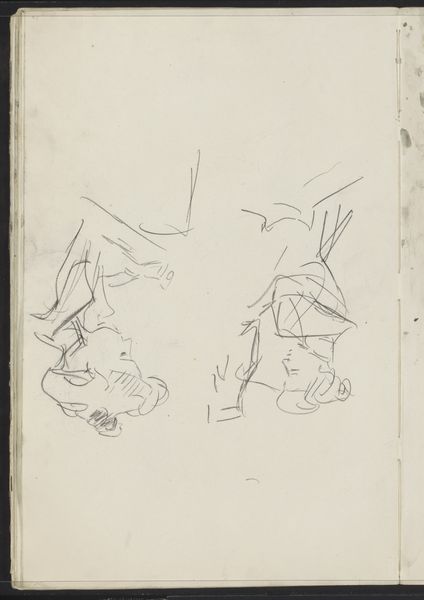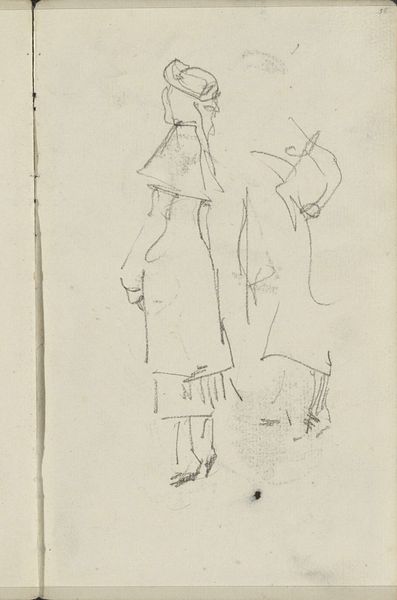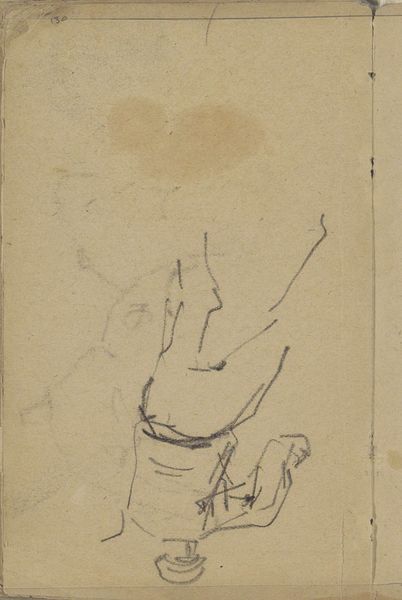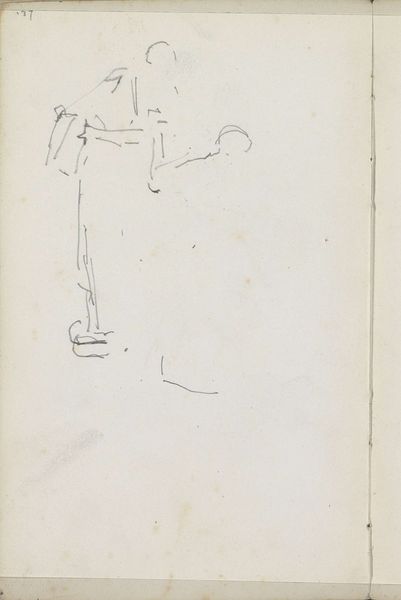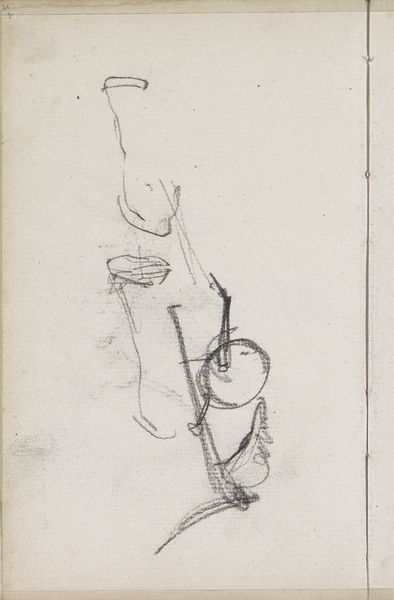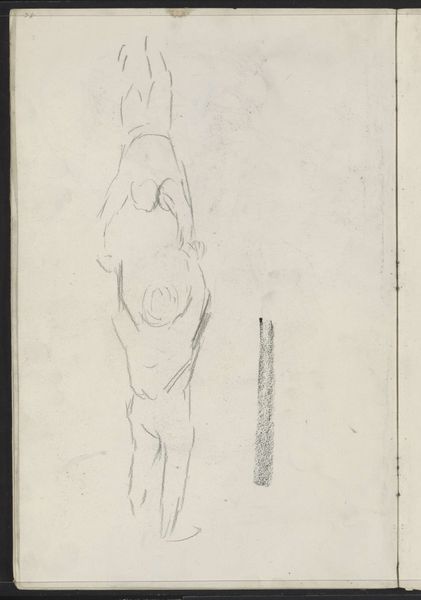
drawing, paper, ink
#
drawing
#
imaginative character sketch
#
quirky sketch
#
incomplete sketchy
#
figuration
#
paper
#
personal sketchbook
#
ink
#
idea generation sketch
#
character sketch
#
ink drawing experimentation
#
geometric
#
sketch
#
sketchbook drawing
#
storyboard and sketchbook work
#
sketchbook art
#
modernism
Copyright: Rijks Museum: Open Domain
Editor: This is “Paar lopende benen en een been” or "Pair of Running Legs and a Leg" by Carel Adolph Lion Cachet, created sometime between 1874 and 1945. It's an ink drawing on paper, and I'm struck by its fragmentary nature, almost like a quick study of movement. What stands out to you? Curator: This seemingly simple sketch offers a lot to unpack from a materialist perspective. I see more than just a study of movement; I see an artist engaging with the very *process* of representing movement. Look at the visible layers of ink, the tentative lines. It speaks to Cachet grappling with the physical act of drawing, the labor involved in capturing a fleeting moment. Where do you think this was made and why do you think this drawing did not progress further? Editor: That's a good point, the layers of ink definitely emphasize the "doing" of art. Given its location in the Rijksmuseum's collection, maybe this was made for artistic purposes in The Netherlands? Perhaps it was a preliminary sketch, maybe for a larger work? Curator: Precisely. Consider the *paper* itself—likely a readily available, mass-produced material. Was it perhaps chosen specifically for its accessibility, signaling a deliberate decision to prioritize process over preciousness? The incomplete nature forces us to focus on *how* the artist attempted to translate the idea of running legs into a visual form. Think of what sketches show you about artists during this era? Editor: I guess I hadn't considered the choice of paper itself as being meaningful! So it's not just about what is depicted, but the very act of depiction, the materials, and the social context of their use? Curator: Exactly. Cachet’s artistic labor, using these materials, reflects the consumption of readily available materials and democratizes artistic work by embracing common resources like paper and ink to remove art-making from traditional limitations. The ‘means of production’ allow new meaning! Editor: That's a fascinating way to look at what I initially perceived as just a quick sketch. Thanks, that perspective really changes how I appreciate the drawing. Curator: It’s these often-overlooked details about art making that tells us something powerful.
Comments
No comments
Be the first to comment and join the conversation on the ultimate creative platform.

